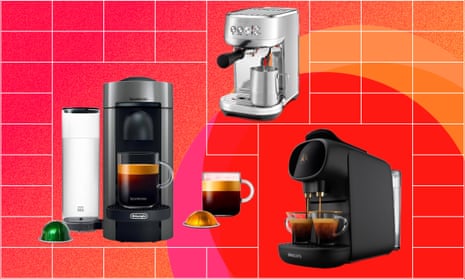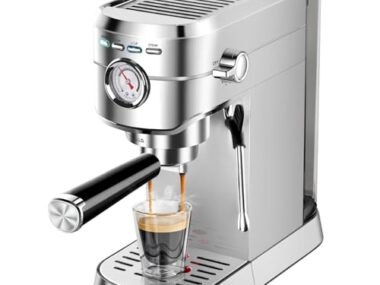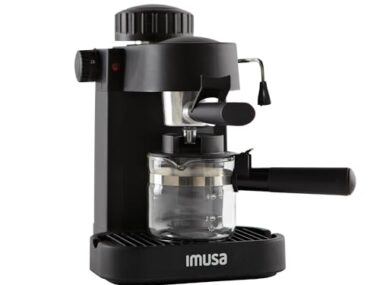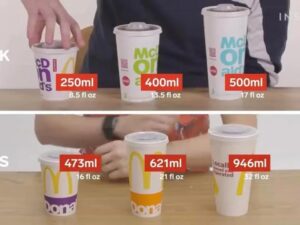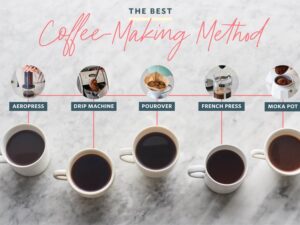Looking to buy an espresso machine? The right one can elevate your coffee game at home. If you’re asking What Espresso Machine Should I Buy, this guide will help.
Choosing the perfect espresso machine depends on your needs and preferences. Espresso machines come in various types and price ranges. Some cater to beginners, while others are designed for experienced baristas. Factors like ease of use, maintenance, and features play a significant role in making the right choice.
Whether you love a simple espresso shot or a fancy latte, there is a machine for you. This guide will help you understand what to look for in an espresso machine, making your decision easier. Let’s explore the different options to find the best one for your coffee journey.
Types Of Espresso Machines
Choosing the right espresso machine can be daunting. With various types available, each offers unique features and benefits. Understanding the different types of espresso machines will help you make an informed decision. Let’s dive into the main categories: Manual, Semi-Automatic, Fully Automatic, and Super-Automatic machines.
Manual Machines
Manual espresso machines, also known as lever machines, require you to control every aspect of the brewing process. They are ideal for those who enjoy a hands-on approach to making coffee. Here’s what you need to know:
- Control: You have complete control over the water pressure and extraction time.
- Skill Level: Requires practice and patience to master.
- Maintenance: Typically easy to maintain due to fewer electronic components.
Manual machines are not for everyone. They are best suited for enthusiasts who enjoy the art of making espresso. These machines can produce exceptional coffee when used correctly. If you love being involved in every step of the process, a manual machine might be the perfect choice for you.
Semi-automatic Machines
Semi-automatic espresso machines strike a balance between control and convenience. They automate some processes while giving you control over others. Key features include:
- Control: You control the grind size, tamping, and extraction time.
- Convenience: The machine handles water pressure and temperature.
- Flexibility: Suitable for beginners and experienced users.
Semi-automatic machines are versatile and user-friendly. They allow you to experiment with different brewing techniques while ensuring consistency. These machines are perfect for those who want to enjoy quality espresso without the complexity of manual machines.
Fully Automatic Machines
Fully automatic espresso machines simplify the process further. They automate most of the brewing steps, making it easier to get a perfect shot every time. Features include:
- Automation: Controls water flow and extraction time.
- Ease of Use: Simple to operate with minimal effort.
- Consistency: Produces consistent results with each use.
Fully automatic machines are great for those who value convenience. They require less skill and time, making them ideal for busy individuals. If you prefer a hassle-free espresso experience, a fully automatic machine is a solid choice.
Super-automatic Machines
Super-automatic espresso machines offer the highest level of convenience. They handle every step of the brewing process, from grinding the beans to frothing the milk. Highlights include:
- Full Automation: Automates grinding, tamping, brewing, and milk frothing.
- Ease of Use: Requires minimal input from the user.
- Customization: Offers programmable settings for personalized drinks.
Super-automatic machines are perfect for those who want a quick and easy espresso experience. They are ideal for busy households or offices where multiple people need coffee throughout the day. These machines provide a high level of convenience and consistency.

Credit: www.nytimes.com
Key Features To Consider
Choosing the right espresso machine can be daunting with so many options available. To make the best choice, it’s important to consider key features that will impact your daily coffee experience. Understanding these features will help you find an espresso machine that meets your needs and preferences.
Pressure Levels
The pressure level is crucial in an espresso machine. It determines how well the coffee grounds are extracted. A standard espresso machine typically operates at 9 bars of pressure. However, some machines offer adjustable pressure settings.
Consider these points when evaluating pressure levels:
- 9 Bar Pressure: The optimal level for a perfect espresso shot.
- Adjustable Pressure: Allows for customization based on coffee type.
- Built-in Pressure Gauge: Monitors and adjusts the pressure for consistency.
A table summarizing common pressure levels:
| Pressure Level | Description |
|---|---|
| 9 Bars | Standard for good espresso extraction. |
| 15 Bars | Higher pressure for a stronger shot. |
| Adjustable | Customizable pressure for various coffee types. |
Boiler Type
The boiler type affects the heating and brewing process. Espresso machines come with different boiler types, each with its own advantages:
- Single Boiler: Ideal for beginners, heats water for both brewing and steaming.
- Dual Boiler: Allows simultaneous brewing and steaming, perfect for advanced users.
- Heat Exchanger: Maintains stable brewing temperature while steaming milk.
Choosing the right boiler type depends on your coffee-making needs and budget. Here’s a quick comparison:
| Boiler Type | Advantages | Disadvantages |
|---|---|---|
| Single Boiler | Cost-effective, simple operation | Cannot brew and steam simultaneously |
| Dual Boiler | Simultaneous brewing and steaming, precise temperature control | Expensive, larger footprint |
| Heat Exchanger | Stable temperature, simultaneous brewing and steaming | More complex, higher cost |
Grind Size Adjustment
Grind size significantly impacts the flavor of your espresso. Machines with grind size adjustment offer better control over the extraction process. Look for these features:
- Burr Grinder: Provides consistent grind size, essential for high-quality espresso.
- Multiple Grind Settings: Allows for fine-tuning based on coffee type and preference.
- Easy Adjustment: User-friendly controls for quick changes.
Grind size adjustment is essential for achieving the perfect shot:
- Fine Grind: Ideal for espresso, provides strong flavor.
- Medium Grind: Suitable for drip coffee, balanced taste.
- Coarse Grind: Best for French press, mild flavor.
Milk Frothing Capability
Milk frothing is important for those who enjoy lattes, cappuccinos, and other milk-based drinks. The quality of the froth can greatly affect the taste and texture of your beverage. Here are key points to consider:
- Steam Wand: Standard frothing tool, requires manual operation.
- Automatic Frother: Convenient for beginners, consistent froth quality.
- Frothing Pitcher: Helps create microfoam for latte art.
Evaluating milk frothing capabilities:
| Frothing Tool | Benefits | Drawbacks |
|---|---|---|
| Steam Wand | Control over froth texture, versatile | Steeper learning curve, manual effort |
| Automatic Frother | Easy to use, consistent results | Less control over texture, can be less durable |
| Frothing Pitcher | Essential for microfoam, helps with latte art | Requires skill and practice |
Budgeting For Your Machine
Choosing the perfect espresso machine can feel overwhelming. With so many choices, it’s easy to get lost. Understanding your budget can simplify the process. Knowing what you can afford helps narrow your options. Let’s explore different budget ranges to find the best espresso machine for you.
Entry-level Options
Starting with entry-level options, these machines are great for beginners. They are affordable and easy to use. If you are new to making espresso, these machines offer a good start without breaking the bank. Typically, entry-level espresso machines range from $100 to $300.
Here are some popular entry-level choices:
- De’Longhi EC155: Priced around $100, it’s compact and reliable.
- Mr. Coffee Café Barista: For about $200, it offers a semi-automatic system with a milk frother.
- Breville Bambino: At approximately $300, it provides quick heating and a sleek design.
These machines are ideal for those who want to experiment with making espresso at home. They are user-friendly and require minimal maintenance. While they may lack some advanced features, they still produce good quality espresso.
Here’s a quick comparison:
| Model | Price | Features |
|---|---|---|
| De’Longhi EC155 | $100 | Compact, reliable |
| Mr. Coffee Café Barista | $200 | Semi-automatic, milk frother |
| Breville Bambino | $300 | Quick heating, sleek design |
Mid-range Choices
For those willing to spend a bit more, mid-range espresso machines offer additional features and better performance. These machines generally cost between $300 and $700. They are perfect for coffee enthusiasts who want more control over their brewing process.
Some excellent mid-range options include:
- Gaggia Classic Pro: Around $450, known for its durability and commercial-style portafilter.
- Breville Barista Express: Priced at about $600, it includes a built-in grinder and steam wand.
- Rancilio Silvia: For approximately $700, it offers professional-grade components and consistent performance.
These machines provide more customization options. You can adjust grind size, water temperature, and pressure. They often come with built-in grinders and steam wands, making it easier to create barista-quality drinks at home.
Here’s a comparison of these mid-range machines:
| Model | Price | Features |
|---|---|---|
| Gaggia Classic Pro | $450 | Durable, commercial-style portafilter |
| Breville Barista Express | $600 | Built-in grinder, steam wand |
| Rancilio Silvia | $700 | Professional-grade components |
High-end Investments
High-end espresso machines are for those serious about their coffee. These machines offer top-notch quality and advanced features. They usually cost over $700 and can go up to several thousand dollars. If you want a machine that delivers exceptional espresso and lasts for years, consider investing in a high-end model.
Here are some premium options:
- La Marzocco Linea Mini: Priced at around $4,500, it offers commercial-grade performance in a compact design.
- Rocket Espresso Appartamento: For about $1,700, it features a heat-exchange boiler and stylish design.
- ECM Synchronika: At approximately $3,000, it provides dual boilers and a PID temperature control.
These machines are designed for serious coffee lovers. They offer precise control over every aspect of the brewing process. Features like dual boilers, PID temperature control, and commercial-grade components ensure the best possible espresso.
Let’s compare these high-end models:
| Model | Price | Features |
|---|---|---|
| La Marzocco Linea Mini | $4,500 | Commercial-grade performance, compact design |
| Rocket Espresso Appartamento | $1,700 | Heat-exchange boiler, stylish design |
| ECM Synchronika | $3,000 | Dual boilers, PID temperature control |
Brands To Explore
When deciding on the perfect espresso machine, understanding the various brands available can make a significant difference. Different brands offer unique features, quality, and pricing. Here, we will explore some top-rated, emerging, and local vs. international brands to help you make an informed choice.
Top-rated Brands
Several brands are renowned for their quality and performance in the espresso machine market. These brands have built a strong reputation over the years. Here are some of the most respected names:
- Breville: Known for its user-friendly design and advanced features. Breville machines often come with programmable settings and a built-in grinder.
- De’Longhi: Offers a wide range of machines from affordable to high-end models. De’Longhi machines are praised for their durability and consistent performance.
- Rancilio: Ideal for those looking for professional-quality espresso at home. The Rancilio Silvia model is a favorite among coffee enthusiasts.
- Gaggia: Known for its Italian craftsmanship and reliable performance. Gaggia machines are perfect for those who appreciate traditional espresso making.
- Jura: Offers sophisticated and fully automatic espresso machines. Jura is known for its sleek design and innovative technology.
Here’s a comparison of some top-rated brands:
| Brand | Price Range | Key Features |
|---|---|---|
| Breville | $500 – $1500 | Programmable settings, built-in grinder |
| De’Longhi | $100 – $1000 | Durable, consistent performance |
| Rancilio | $700 – $1200 | Professional-quality, robust build |
| Gaggia | $300 – $900 | Traditional espresso making, Italian craftsmanship |
| Jura | $800 – $3000 | Fully automatic, sleek design |
Emerging Brands
Emerging brands are gaining popularity for their innovative designs and competitive pricing. These brands are worth considering if you want something new and unique:
- Flair Espresso: Offers manual lever machines that don’t require electricity. Flair machines are portable and easy to use.
- Barista Warrior: Known for its sleek design and affordability. Barista Warrior machines are ideal for beginners.
- Ratio: Focuses on precision and quality. Ratio machines are designed to provide a perfect cup every time.
- Wacaco: Specializes in portable espresso makers. Wacaco machines are perfect for travel and outdoor use.
- Cafelat: Offers innovative and compact machines. Cafelat machines are great for those with limited space.
Here’s a comparison of some emerging brands:
| Brand | Price Range | Key Features |
|---|---|---|
| Flair Espresso | $150 – $300 | Manual lever, portable |
| Barista Warrior | $100 – $200 | Sleek design, affordable |
| Ratio | $500 – $1000 | Precision, quality |
| Wacaco | $50 – $150 | Portable, easy to use |
| Cafelat | $200 – $400 | Innovative, compact |
Local Vs. International Brands
Choosing between local and international brands can impact your buying decision. Local brands often offer personalized customer service and easier maintenance. International brands, on the other hand, might provide advanced technology and wider availability.
- Local Brands: These brands often focus on quality and craftsmanship. They may offer custom-made options and better customer support.
- International Brands: Known for their extensive research and development. These brands usually offer a wide range of features and are available globally.
Here’s a comparison of local vs. international brands:
| Aspect | Local Brands | International Brands |
|---|---|---|
| Customer Service | Personalized, faster response | Standardized, may take longer |
| Technology | Traditional, handcrafted | Advanced, innovative |
| Availability | Limited to region | Global |
| Maintenance | Easier, local repair services | May require international shipping |
Exploring these brands will help you find the perfect espresso machine that fits your needs and preferences.
User Experience
Choosing the right espresso machine can be challenging. The user experience is crucial. It determines how much you will enjoy making and drinking your espresso. Let’s explore key aspects that affect user experience: ease of use, cleaning and maintenance, and customer support.
Ease Of Use
An espresso machine’s ease of use is vital. A simple machine saves time and frustration. Look for machines with straightforward controls. A clear interface helps, especially for beginners.
Consider these features for ease of use:
- One-Touch Operation: Some machines offer one-touch brewing. This simplifies the process.
- Programmable Settings: Save your favorite settings for future use.
- Clear Indicators: Lights or displays that show when the machine is ready or needs attention.
Machines with these features are generally more user-friendly:
| Feature | Benefit |
|---|---|
| One-Touch Operation | Quick and easy brewing |
| Programmable Settings | Consistency in taste |
| Clear Indicators | Less guesswork |
Also, check user reviews. They often highlight ease of use. This feedback can be very helpful.
Cleaning And Maintenance
Cleaning and maintenance are crucial for any espresso machine. A machine that is hard to clean can be a hassle. Easy cleaning means more enjoyable coffee.
Look for these cleaning features:
- Removable Parts: Parts that come off easily for washing.
- Self-Cleaning Function: Machines that clean themselves save time.
- Descaling Alerts: Notifications when it’s time to descale.
Consider these aspects for maintenance:
- Durable Materials: Stainless steel parts last longer.
- Replacement Parts: Easily available replacement parts.
- Warranty: A good warranty can save on repair costs.
Maintaining your machine ensures it lasts longer. Regular cleaning can also improve the taste of your coffee.
Customer Support
Good customer support can make a big difference. If something goes wrong, you need help quickly.
Consider these factors for customer support:
- Availability: 24/7 support is ideal.
- Response Time: Fast responses can save you time.
- Knowledgeable Staff: Experts who can solve problems quickly.
Check for these customer support features:
| Support Feature | Benefit |
|---|---|
| 24/7 Availability | Help anytime |
| Fast Response Time | Quick solutions |
| Knowledgeable Staff | Effective problem-solving |
Also, read customer reviews. They often mention support experiences. This can give you a clear picture of what to expect.
:max_bytes(150000):strip_icc()/sea-primary-espresso-machines-july-24-nsimpson-588-90e76e0bef6c416683df4e0a27579d8a.jpeg)
Credit: www.seriouseats.com
Espresso Machine Accessories
Choosing the right espresso machine can be a daunting task. Besides the machine itself, several accessories can enhance your coffee experience. These accessories include grinders, tampers, milk frothers, and cups. Each plays a crucial role in crafting the perfect espresso. Let’s dive into each category to understand their importance.
Grinders
The grinder is one of the most essential accessories for an espresso machine. A good grinder ensures that the coffee beans are ground to the correct consistency. This affects the flavor and quality of your espresso.
When selecting a grinder, consider the following:
- Burr vs. Blade Grinders: Burr grinders are preferred for espresso because they produce a consistent grind. Blade grinders can be less uniform.
- Grind Settings: Look for grinders with adjustable settings. This allows you to fine-tune the grind size for different beans and espresso machines.
- Capacity: Choose a grinder with a suitable bean hopper capacity. Larger capacities are convenient for frequent use.
Here is a comparison table of popular grinders:
| Grinder | Type | Grind Settings | Price |
|---|---|---|---|
| Baratza Encore | Burr | 40 | $139 |
| Capresso Infinity | Burr | 16 | $99 |
| Krups GX5000 | Burr | 9 | $49 |
Tampers
Tampers are used to press the ground coffee into the portafilter. This step is crucial for ensuring a smooth extraction.
Important aspects to consider when choosing a tamper:
- Material: Stainless steel tampers are durable and provide a good weight for pressing.
- Size: Ensure the tamper fits the size of your portafilter. Most portafilters are 58mm.
- Shape: Flat or convex tampers are available. Flat tampers are commonly used, but some prefer convex for better coffee distribution.
Here are some recommended tampers:
| Tamper | Material | Size | Price |
|---|---|---|---|
| Rattleware 58mm | Stainless Steel | 58mm | $39 |
| Motalius 51mm | Stainless Steel | 51mm | $25 |
| LuxHaus 49mm | Stainless Steel | 49mm | $30 |
Milk Frothers
Milk frothers are essential for creating lattes and cappuccinos. They help in frothing milk to the right consistency.
When choosing a milk frother, consider:
- Type: Handheld, automatic, and steam wand frothers are available. Each has its own benefits.
- Capacity: Ensure the frother can handle the amount of milk you need.
- Ease of Cleaning: Easy-to-clean frothers save time and effort.
Here is a list of popular milk frothers:
| Frother | Type | Capacity | Price |
|---|---|---|---|
| Nespresso Aeroccino 3 | Automatic | 8 oz | $99 |
| Breville Milk Cafe | Automatic | 16 oz | $129 |
| HIC Milk Frother | Handheld | N/A | $12 |
Cups And Accessories
Cups and accessories enhance your espresso experience. The right cup can affect the taste and presentation.
Consider these factors when selecting cups:
- Material: Ceramic, glass, and stainless steel cups are popular. Ceramic retains heat well.
- Size: Ensure the cup matches the size of your espresso shot or latte.
- Design: Choose cups that fit your style and preferences.
Additional accessories to consider:
- Saucers: Matching saucers for a complete set.
- Spoons: Espresso spoons for stirring.
- Storage: Cup racks and storage solutions.
Here is a list of recommended cups and accessories:
| Item | Material | Size | Price |
|---|---|---|---|
| DeLonghi Espresso Cups | Ceramic | 2 oz | $20 (set of 2) |
| Bormioli Rocco Glass Cups | Glass | 3 oz | $25 (set of 4) |
| JoyJolt Double Wall Cups | Glass | 6 oz | $30 (set of 2) |
Where To Buy
When deciding what espresso machine to buy, knowing where to buy it is crucial. There are various options, each with its own advantages. Whether you prefer online shopping, visiting specialty stores, or exploring second-hand options, this guide will help you make an informed decision.
Online Retailers
Shopping online for an espresso machine offers convenience and variety. You can compare prices and read reviews from the comfort of your home. Some popular online retailers include:
- Amazon: Known for its vast selection and competitive pricing. User reviews help you understand the pros and cons of each machine.
- eBay: Offers new and used machines. Auctions can sometimes lead to great deals.
- Best Buy: Sells both online and in-store. Known for its reliable customer service and return policy.
- Walmart: Offers a range of budget-friendly options with free shipping on most items.
Online retailers often provide detailed product descriptions and specifications. Many sites also offer customer service chat options for immediate assistance. Shipping times and return policies vary, so read the fine print before purchasing.
Specialty Stores
Specialty stores offer the chance to see and test espresso machines in person. These stores often have knowledgeable staff who can provide personalized recommendations. Some well-known specialty stores include:
- Williams-Sonoma: Known for high-end kitchen appliances. Staff can guide you through different models and brands.
- Sur La Table: Offers a wide range of espresso machines and accessories. They also provide in-store demonstrations.
- Local Coffee Shops: Some coffee shops sell espresso machines and can offer insights based on their own use.
Visiting a specialty store allows you to ask questions and get hands-on experience with the machines. You can test features like steam wands and grinders. This helps ensure you are comfortable with your purchase. Specialty stores may also offer classes on how to use your new machine effectively.
Second-hand Options
Buying a second-hand espresso machine can save money while still providing a quality product. There are several places to find used machines:
- Craigslist: A popular platform for local buying and selling. Always inspect the machine in person before purchasing.
- Facebook Marketplace: Offers listings from people in your community. You can often negotiate the price.
- Thrift Stores: Occasionally have espresso machines at very low prices. The selection is unpredictable, so frequent visits may be necessary.
- Refurbished Sellers: Some companies specialize in refurbishing and reselling espresso machines. These often come with a limited warranty.
When buying second-hand, check for wear and tear. Test the machine if possible. Ask the seller about its history and maintenance. This helps ensure you get a reliable product. Refurbished machines can be a great option as they are professionally restored and tested.
Reviews And Recommendations
Choosing the right espresso machine can be challenging with so many options available. Reviews and recommendations can guide you to the perfect choice. Expert reviews provide technical insights, user testimonials share real-world experiences, and comparative analyses highlight key differences. Let’s dive into these valuable resources.
Expert Reviews
Experts offer in-depth analyses of espresso machines, focusing on various aspects such as build quality, features, and performance. Here are some insights from industry professionals:
- Build Quality: Experts often emphasize the importance of durable materials like stainless steel. Machines with robust construction tend to last longer.
- Features: High-end models include advanced features like programmable settings, dual boilers, and integrated grinders. Experts recommend these for serious coffee enthusiasts.
- Performance: The consistency of espresso shots is crucial. Machines with stable temperature control and high-pressure pumps usually perform better.
Here’s a comparison table of top-reviewed machines:
| Model | Build Quality | Key Features | Performance Rating |
|---|---|---|---|
| Breville Barista Express | Stainless Steel | Integrated Grinder, Temperature Control | 9/10 |
| De’Longhi La Specialista | Aluminum | Dual Heating System, Smart Tamping | 8.5/10 |
| Gaggia Classic Pro | Stainless Steel | Commercial Steam Wand | 8/10 |
User Testimonials
User testimonials offer valuable insights from real-world experiences. Here are some common points shared by users:
- Ease of Use: Many users appreciate machines that are easy to use and clean. Simple interfaces and removable parts are highly valued.
- Value for Money: Users often mention the cost-effectiveness of machines. They look for a balance between price and features.
- Durability: Long-term users highlight the importance of durable machines. They prefer models that last and require minimal maintenance.
Here are some testimonials:
“The Breville Barista Express is fantastic! It’s easy to use and makes great coffee. Totally worth the investment.” – Jane D.
“De’Longhi La Specialista has been a game-changer for my morning routine. The smart tamping feature is very convenient.” – Mike P.
“I’ve had the Gaggia Classic Pro for years. It’s reliable and still makes excellent espresso.” – Sarah W.
Comparative Analysis
Comparative analysis helps in understanding the differences and similarities between various models. Here’s how some popular models compare:
- Breville Barista Express vs. De’Longhi La Specialista: The Breville model is known for its integrated grinder and temperature control, while the De’Longhi offers a smart tamping station and a dual heating system. Both have their unique strengths.
- Gaggia Classic Pro vs. Breville Barista Express: The Gaggia model is simpler and more robust, preferred by those who like a straightforward machine. The Breville, with more features, is ideal for those who want versatility.
- De’Longhi La Specialista vs. Gaggia Classic Pro: De’Longhi’s model is more feature-rich with its smart tamping and dual heating. Gaggia’s model is praised for its durability and commercial-grade steam wand.
Here’s a side-by-side comparison:
| Model | Strengths | Weaknesses |
|---|---|---|
| Breville Barista Express | Integrated Grinder, Versatility | Higher Price |
| De’Longhi La Specialista | Smart Tamping, Dual Heating | Complex Interface |
| Gaggia Classic Pro | Durability, Simplicity | Fewer Features |
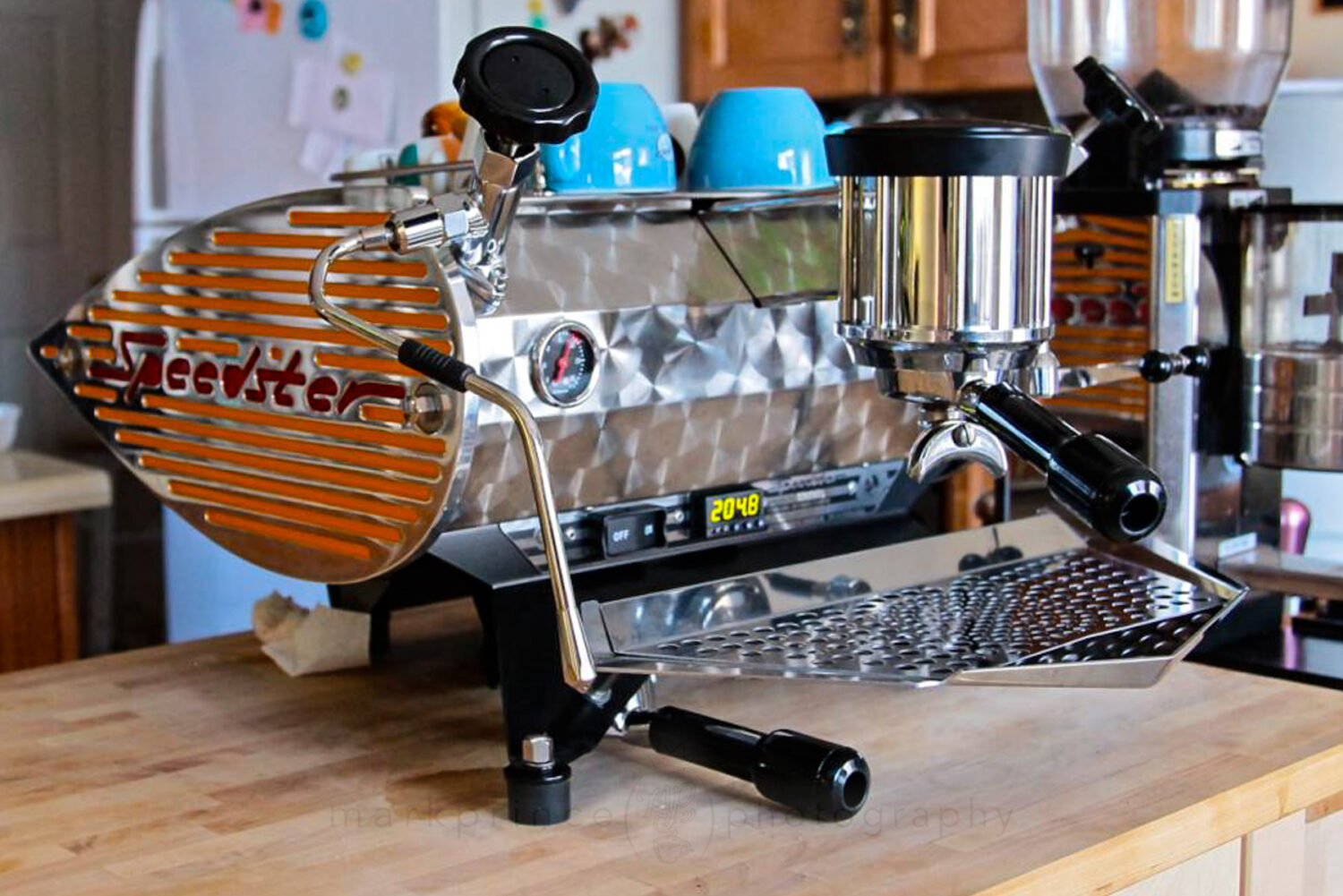
Credit: coffeegeek.com
Frequently Asked Questions
Which Is The Best Espresso Machine For Home Use?
The Breville Bambino Plus is the best espresso machine for home use. It offers quick heating, precise control, and consistent quality.
What’s Better, A 15 Bar Or 20 Bar Espresso Machine?
A 15 bar espresso machine is typically sufficient for home use. It provides the right pressure for a rich, flavorful espresso. A 20 bar machine may offer slightly more pressure, but the difference is often negligible. Choose based on your budget and preferences.
Is It Worth Having An Espresso Machine At Home?
Yes, having an espresso machine at home is worth it. You enjoy quality coffee anytime and save money on café visits.
What Are The 3 Types Of Espresso Machines?
The 3 types of espresso machines are manual, semi-automatic, and fully automatic. Each offers different levels of control and convenience.
Conclusion
Choosing the right espresso machine depends on your needs and budget. Consider the machine’s features, ease of use, and maintenance. Think about your favorite coffee drinks and the machine’s capabilities. Compare different brands and models. Read reviews from other users.
Your perfect espresso machine is out there. Make an informed decision and enjoy your coffee. Happy brewing!
